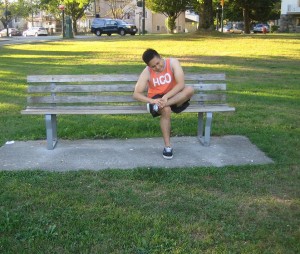
Depending on the activity you are engaged in, you might end up getting blisters if you are not careful. If you want to prevent a blister from forming, it is best to use socks, gloves or bandages as well as any kind of protective covering on the area that is constantly used. Today, there are athletic socks that are built with extra padding in vital areas, particularly the heels.
Do Not Puncture the Blister(s)!
Some individuals find it tempting to puncture blisters even if it is not causing any discomfort or pain. This is not a good move since it will only worsen and can even become infected if it is not properly taken care of. With this in mind, it is important that you know how to perform first aid care for blisters.
Can it Get Infected?
For blisters that are not causing any pain or discomfort, it is best to leave it intact. If the skin over a blister is left intact, it serves as a natural barrier against bacteria as well as minimizing the risk for infection. A small-sized blister should be covered with an adhesive bandage and enclosed with a large plastic-coated yet porous gauze pad that readily absorbs moisture as well as allowing the wound to breath. For individuals who are allergic to the adhesive in some tapes, you can utilize a tape that is paper-based.
Always avoid puncturing a blister unless it is too painful or prevents you from using your hands or walking normally. As for individuals who are suffering from poor circulation or diabetes, it is best to call the doctor before applying first aid care. To learn about available provide care for wounds enrol in first aid training with a St Mark James provider near you.
How To Relieve the Pain of a Blister?
In cases where you have to relieve pain caused by a blister, you are required to drain the fluid yet keeping the overlying skin intact. The first step is to wash your hands and the blister using soap and warm water. The next step is to rub on iodine or alcohol using a cotton swab on the blister. With a sharp needle, you have to sterilize it by wiping it with rubbing alcohol. Once the needle is sterilized, use it to puncture the blister by targeting several spots close to the edge of the blister, not directly on the overlying skin. Allow the fluid to drain but leave the overlying skin intact. The moment the blister is fully drained of its contents, apply an antibiotic ointment over the blister and wrap it with gauze or bandage to manage the wound. After several days, you have to cut the dead skin away using scissors and tweezers that were properly sterilized. Do not forget to apply antibiotic ointment and bandage after.
If there are indications of infection on the area surrounding the blister particularly redness, pain, drainage of pus or warmth, it is best to call your doctor right away.
